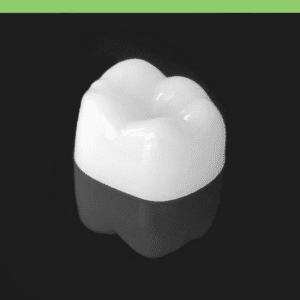 Dental composite is a synthetic resin — a silicon dioxide mixture filled with tooth colored plastic material — usually used for tooth-colored fillings, but it can also be used to make relatively strong crowns. Currently, the most commonly used resin in crowns and dentures is acrylic polymer or of Polymethyl Methacrylate. The process involves curing it and processing it into blocks outside of the mouth and then milling it to fit using CAD/CAM techniques like CEREC. These blocks are cured for longer times and curing shrinkage can be handled in a better way. As a result, they are less prone to shrinkage stress and marginal gaps, and have higher levels and depths of cure than direct composites in dental fillings.
Dental composite is a synthetic resin — a silicon dioxide mixture filled with tooth colored plastic material — usually used for tooth-colored fillings, but it can also be used to make relatively strong crowns. Currently, the most commonly used resin in crowns and dentures is acrylic polymer or of Polymethyl Methacrylate. The process involves curing it and processing it into blocks outside of the mouth and then milling it to fit using CAD/CAM techniques like CEREC. These blocks are cured for longer times and curing shrinkage can be handled in a better way. As a result, they are less prone to shrinkage stress and marginal gaps, and have higher levels and depths of cure than direct composites in dental fillings.
While dental composite is the material least often used for a crown restoration, for patients with extreme metal sensitivities, allergy to porcelain bonding techniques, or who are unable to tolerate full porcelain, this can be a good alternative. Of all dental crowns, composite has the least strength and durability, so it does need to be replaced more often.
